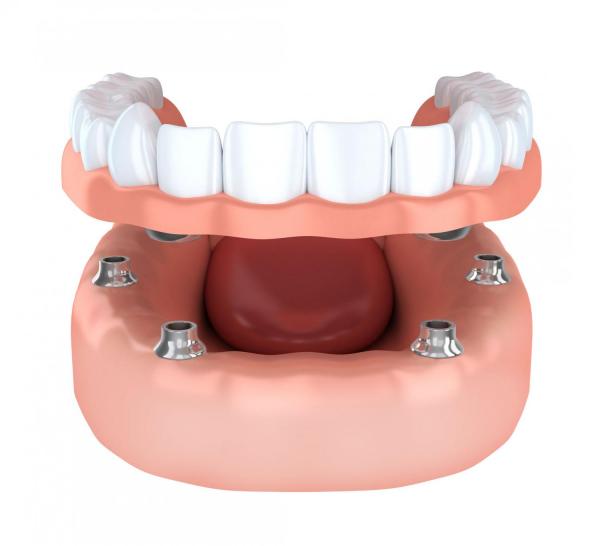
Implant supported dentures are special types of prostheses which depend upon dental implants for their retention and stability. The best thing about implant supported dentures is that they combine both the qualities of dental implants and removable dentures. Unlike the conventional removable dentures, implant supported dentures derive their support from dental implants which are firmly embedded within the jaw bone.
Who can benefit from implant supported overdentures?
If you are not happy with your conventional dentures because they do not fit properly or they slip when you are speaking, then implant supported dentures are an ideal option for you. This is because the implants provide a sound foundation for the dentures, thereby improving your chewing and speech efficiency. However, for having your teeth replaced with an implant supported prosthesis, you must have sufficient density and thickness of the residual jaw bone available, so that it can hold the implants firmly in place.
How implant supported prostheses work?
Implant supported denture are prepared from the same pink colored acrylic that is used for the fabrication of conventional dentures. The artificial teeth that are used on these dentures are made from acrylic or porcelain. The internal surface of the denture base contains attachments whose corresponding part is present on the implant. In this way, when the denture is seated over the implants, both these corresponding attachments fit into each other perfectly, thereby preventing the denture from moving or slipping.
Types of implant supported overdentures
Based on the attachment system, or precision attachment used, implant supported dentures can be divided into two types:
- Bar-retained overdentures – in these types of implant supported dentures, a metallic bar is placed over the implants. The internal surface of the denture is designed in such a way that it snuggly fits into the bar when it is inserted.
- Ball-retained overdentures – in this type of prosthesis, each implant contains a ball-ended metal (male) attachment. Similarly, the fitting surface of the denture contains (female) sockets that with ball-ended attachments and firmly hold the denture.
Fabrication process of implant supported prostheses
Fabrication procedure of implant supported prostheses is divided into two phases. The first phase involves the extraction of grossly decayed or infected teeth, followed by healing of the extraction site and placement of dental implants which will support the dentures. In the next phase, preparation of the dentures is carried out in the conventional way. The only difference is that these dentures contain bar or ball-shaped sockets of the precision attachments.
- Initial Consultation and Treatment Planning – not all dental patients are candidates for getting implants. To assess your eligibility, your dentist will perform a detailed clinical examination, and will study your medical and dental records. If you're dentist feels that you are a suitable candidate, a detailed treatment plan will be devised for replacing your missing teeth with implant supported dentures.
- Tooth extraction -following the removal of all remaining teeth, a 4 month healing period will be needed to allow the bone to regenerate and this is followed by a CT scan to evalute the condition of the bone. A temporary denture will be provided after tooth extraction and this will be worn until the very end of the treatment.
- Implant Insertion – the next step involves the surgical placement of the implants under local anesthesia. Your dentist will drill a hole inside the jaw bone after incising through the overlying soft tissues and raising a surgical flap. Next, the implant will be screwed into position by applying precise and controlled forces. Once the implant is inserted into place, healing collars will be placed over them and the surgical flap will be sutured back to its position. This is followed by a healing period of 3-4-9 months.
- Placing the abutments – after about 14 days of placement of healing screws, they will be removed and replaced with abutments. Your dentist will then make an impression of your teeth which will be sent to the laboratory for fabrication of the overdenture. Once the overdentures are received from the laboratory, they are attached to the implants with the help of a precision attachment system.
Why are implant supported dentures better than conventional dentures?
Since implant supported overdentures remain fixed to the implants, they will look and feel just like your natural teeth. they will also significantly improve your chewing and speech capability. This means that you will be able to enjoy all types of foods without being worried about your dentures slipping out of your mouth. Although implant supported dentures are much more expensive than the conventional dentures, their high cost is a minor issue in comparison to their numerous benefits.


